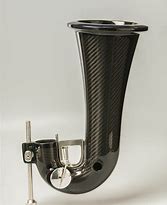-
Lohff & Pfeiffer
About Lohff & Pfeiffer
Iimprint
Contact
Newsletter
Location
L&P team
- Instruments
General
Trade options
About clarinet
Search specific instrument
Ab-clarinet
Eb-clarinet
D-clarinet
C-clarinet
Bb-clarinet
A-clarinet
Mozart basset-clarinet A
G-clarinet
Bassethorn F
Alto-clarinet Eb
Bass-clarinet
Contraalto Eb-clarinet
Contrabasse Bb-clarinet
German-Albert system Bb
Reform Boehm A & Bb
Peter Bastian Instruments
Plateau clarinets
Quartertone clarinet
- L&P Optimization
Optimization
Customization
Specialities
Special Keywork
- Accessories
General
Care products
For instruments
Reeds
Tools for reeds
Straps and hand rests
- Repair
Book time
About Repair
Maintenance
Plating-Surface treatment
Pads
Padding style
Cracks
Tone hole problems
Joints
- Tips & Advice
How to..
Videos
Worldwide external information
Problems & help
Education & learning

.Bells
Bells are the largest opening of the instrument and influence the sound, intonation, and tonal stability in the high register. They are available in many different shapes, forms, materials, bores, thicknesses, and with or without keys. Since bores can change over time it can sometimes be advisable to rotate the bell to see if it sounds better in different positions.

Length The bell's length and opening diameter has a big influence on intonation, especially on low E/long B. Choosing a shorter bell can help if these notes are too flat.

Low E-resonance Bells can also facilitate intonation and venting with an extra-low E resonance key. In many cases, this solves the low E pitch problem and makes the sound of the low E fit much better into the scale. It will require that you have the low E mechanism installed on your instrument.

Resonance holes Some bells just have holes without any key. The resonance hole helps the low E (or C on Basses) to sound free and open.

Bell rings Most bells have a metal ring at the top as reinforcement against cracking during assembly. On new instruments, it is not uncommon to encounter problems fitting the bell all the way onto the lower joint. This is because the clarinet's lower tenon can expand when humidified but the bell's metal ring prevents the same level of expansion. If this occurs, follow the instructions already given for barrels..read more

The other ring found on most bells is the larger, lower ring. It often has a dull finish and is not silver-plated. Because the ring was shrunk and pressed onto the bell when it was made, any sliver plating would be damaged in the process.
Both upper and lower rings are very good protection against accidental damage.
Loose ring problems When the humidity dips very low, rings often become loose and can buzz or rattle when playing. A quick and easy solution is to put a wet cloth around the ring or to ask your repairman to shrink the ring so that it fits again. If rings on the barrel or top of the bell become loose enough to be completely removed, a thin layer of paper can be placed around the wood and the ring pressed over it. Don't glue any of the rings.
.read more

Help us to get better
Was this article helpful?
Comments, additions or questions are always welcome at: info@clarinet.dk(C) 2014 - by Lohff & Pfeiffer - Brøndbyvej 211 - 2625 Vallensbæk + 45 3535 8643 - SE DK 1895 7485 info@clarinet.dk - Instruments






